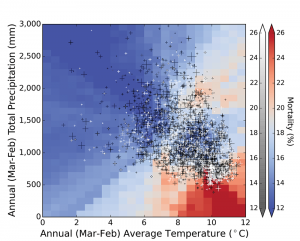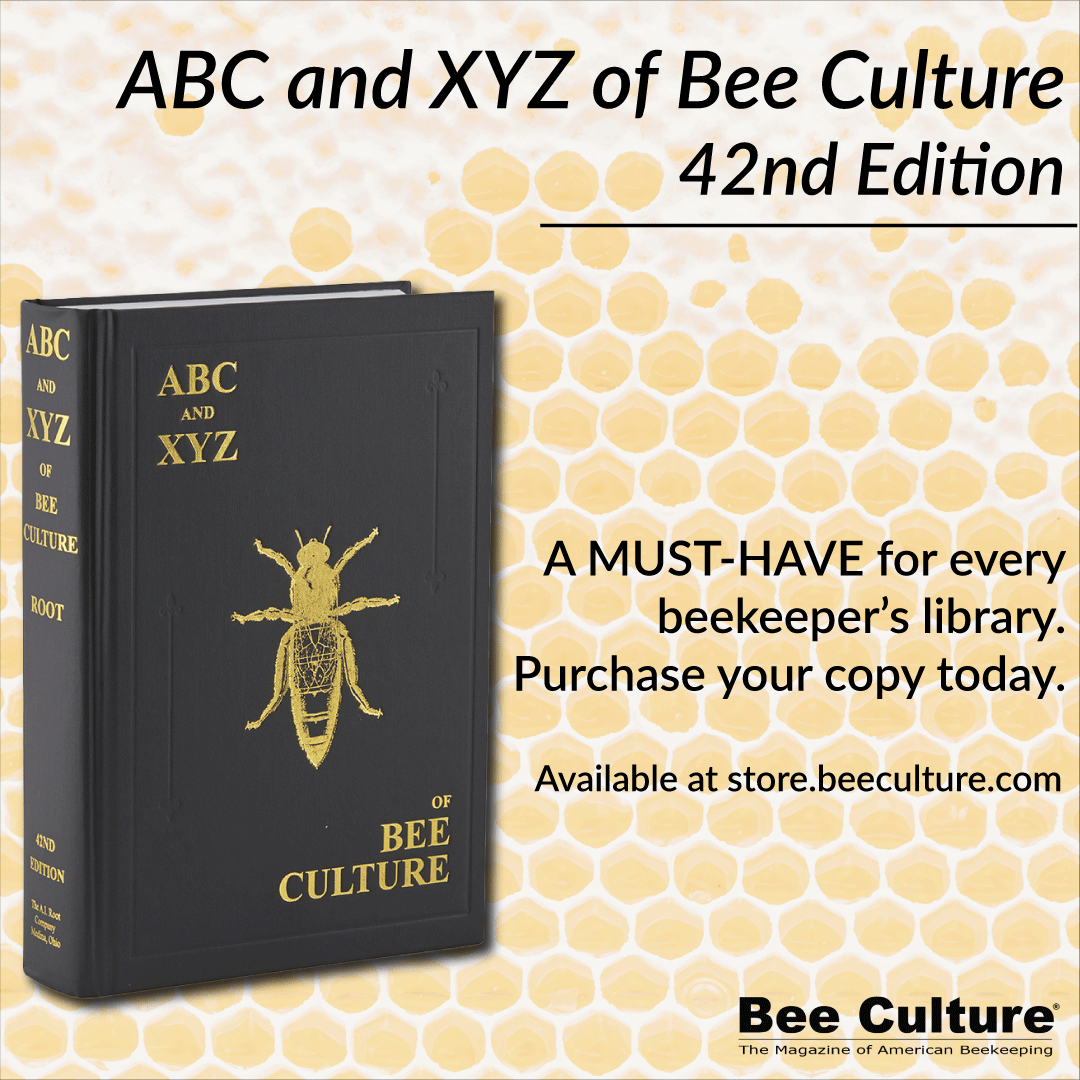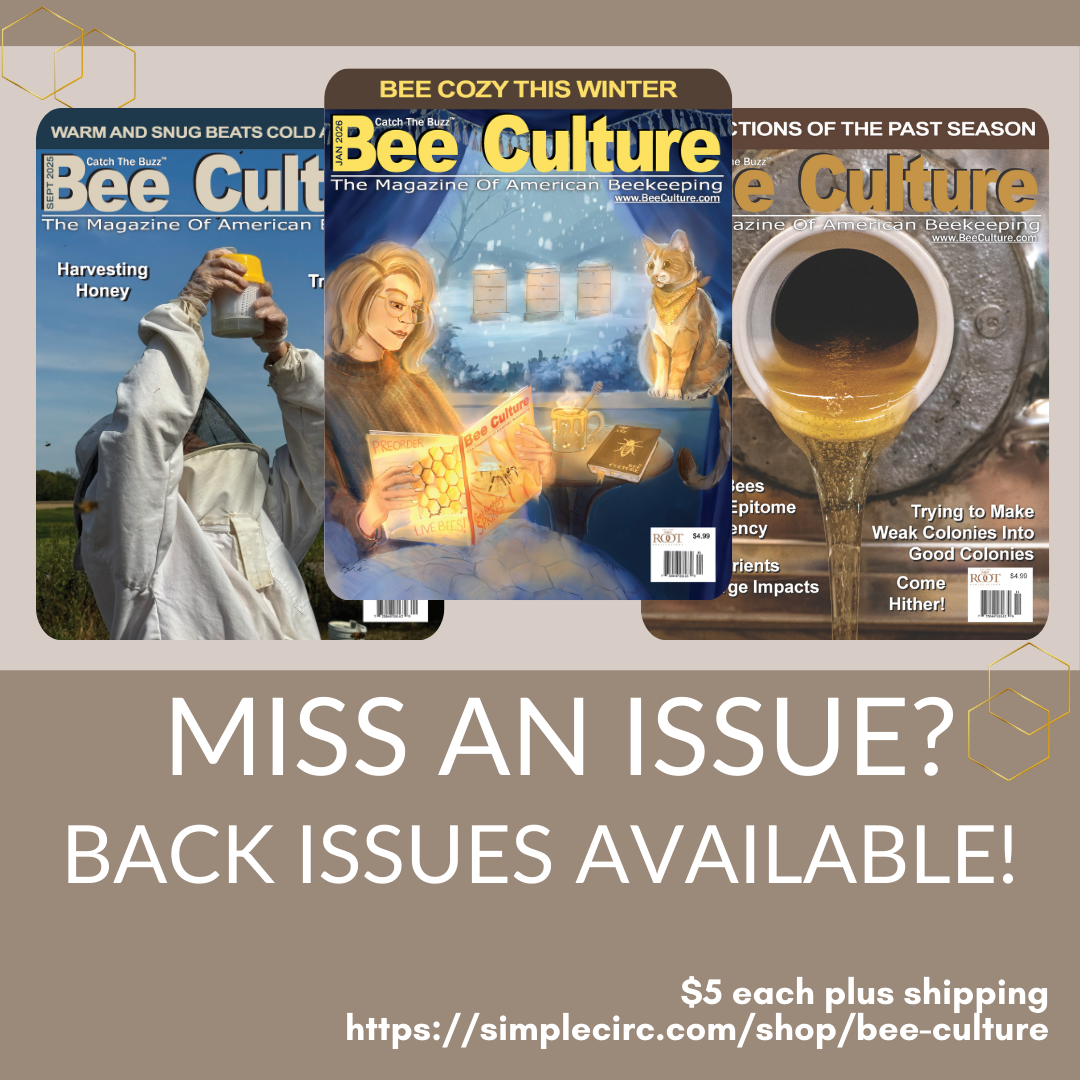By: Jay Evans
Studying The Weather Goes A Long Way In Knowing Colony Health
Honey bee colonies, along with humans and the rest of life on Earth, are strongly impacted by the weather. As a species, Apis mellifera has succeeded incredibly well from the tropics to the colder regions of Europe and Asia. With help from their human keepers, honey bees now live across most of the globe, surviving drought conditions, intense rain, and winters that have them sheltering for three fourths of the year. Still, bees and beekeepers are not completely immune from climate impacts, both current and forecasted. Understanding the impacts of climate on forage and bee needs is vital for thoughtful beekeepers as they make decisions about bee movement, provisioning, and parasite control.
A recent study shows the value in exploiting high-resolution weather data in order to predict climate impacts on honey bee health and overWinter survival. Thanks to our economic and emotional obsession with the weather, satellites and ground weather stations collect continual data at a fine scale throughout the world. Matthew Switanek and colleagues from the University of Graz in Austria used creative methods to connect weather data to bee colony fates in their recent paper “Modelling seasonal effects of temperature and precipitation on honey bee winter mortality in a temperate climate”, freely available in the journal “Science of the Total Environment”, http://dx.doi.org/10.1016/j.scitotenv.2016.11.178. The scientists involved include two climate experts as well as Karl Crailsheim and Robert Brodschneider, leading bee researchers from Graz.
The authors used computational tools and weather station data to infer temperature, rainfall, precipitation, windspeed, and solar radiation on a five kilometer (km) x 5 km grid across the entire country, a scale that matches honey bee foraging distances. They merged six years of weather reports with colony overwintering loss rates for the same timespan and let the data tell them which weather variables aligned best with individual colony loss rates. Thanks to the mountainous nature of Austria they found great variation in all of these traits both across months and years and across apiaries in the country. They also benefitted from an open survey of beekeepers and precise colony locations for >100,000 colonies across the five year study. The most important predictors for colony loss were temperature and precipitation; higher temperatures and low rainfall in almost every month were both tied to future colony losses. An exception that lends credence to their methods was February, for which extreme cold snaps reversed the temperature effect and had a negative relationship with colony survival. It is important to note that the computer models used by the authors separated each variable, even those that are naturally correlated (i.e., sunny, warmer days are tied to less rainfall). Again, this gives more confidence that they are identifying causal factors in colony survivorship.

Average annual (March-February) temperature and precipitation values for the beekeepers in the period 2009-2014. The plus signs are located according to the beekeeper’s observed climatic values, while the gray colorbar shows their Winter mortality percentages. The blue to red colorbar reflects the modelled mortality sensitivity to climate. The colored grid cells are obtained with a simplified kNNM that is run using annual temperature and precipitation as predictors.
In the end, they used their weather grid to ‘predict forward’ weather impacts on colony overwintering loss rates. Along with producing a spectacularly colorful graph (right), this effort did quite well in forecasting overwinter mortality for Austrian beehives. The results do not overwhelm the many additional factors that impact colony health, from parasites and pesticides to nutrition, but rather show how weather interacts with these factors. Indeed, good beekeepers, given colony checkups and their own climate sense, can and do adjust to weather all the time. Weather and seasonality are no-brainers for mite treatments, colony transport, and nutrition for example. Nevertheless, these results indicate that weather had a strong and often quite local background impact on winter losses on top of beekeeping decisions and variable external pressures.
On a practical level, beekeepers might be able to use this month’s or last month’s rain regime as a predictor of forage long before those plants start flowering. On a larger scale, honey producers and agricultural statisticians could use, and likely are using, weather patterns worldwide to infer colony health and productivity. For both efforts, the computational tools used by these authors might help decouple the weather from the many other factors beekeepers and producers juggle when making their decisions.
If you are curious to see for yourself the precision of weather data and even apply it to your past notes regarding bee survival, treatment and feeding, there are excellent and freely available resources. As a start, plug your hometown or apiary zip code into the web at https://www.wunderground.com/history/. If you choose a random date from the past, you will see all the basic weather information you might care for. If you are a multi-generation beekeeper, or especially lucky, you can compare your colony notes to daily or monthly weather records from the 1930’s onward for some sites in the United States. International locations listed in this site seem to be limited to the past 20 years, still a good time frame for those curious to see how the weather matches their own beekeeping successes and losses. Should you wish to carry out your own analyses of longterm weather effects on local honey bee colonies, you can enter extended dates. With little effort, I was able to get a spreadsheet file showing daily numbers for all the basic weather parameters in College Park, Maryland, from 1948 to the present time, fun!
In a future column I will dig into research on the matching bee genes to their environment, a hot topic in beekeeping and bee breeding. As a teaser, I was privileged to watch a fascinating talk by Erin MacGregor–Forbes at the 2017 North American Beekeeping Conference. With support from the federally funded Sustainable Agriculture Research and Education program (http://www.SARE.org), she conducted a timely experiment to determine colony fates when honey bee packages headed by southerly queens were requeened with queens reared from populations closer to her Maine study site (http://mysare.sare.org/sare_project/fne12-756/). Indeed, this manipulation had a strong positive effect. Time will tell whether these striking results reflect climate-adapted genes, queen quality, or perhaps the benefits of requeening mid-season, but the potential is great.
Jay Evans is the Research Leader for the USDA Honey Bee Lab in Beltsville, MD.










